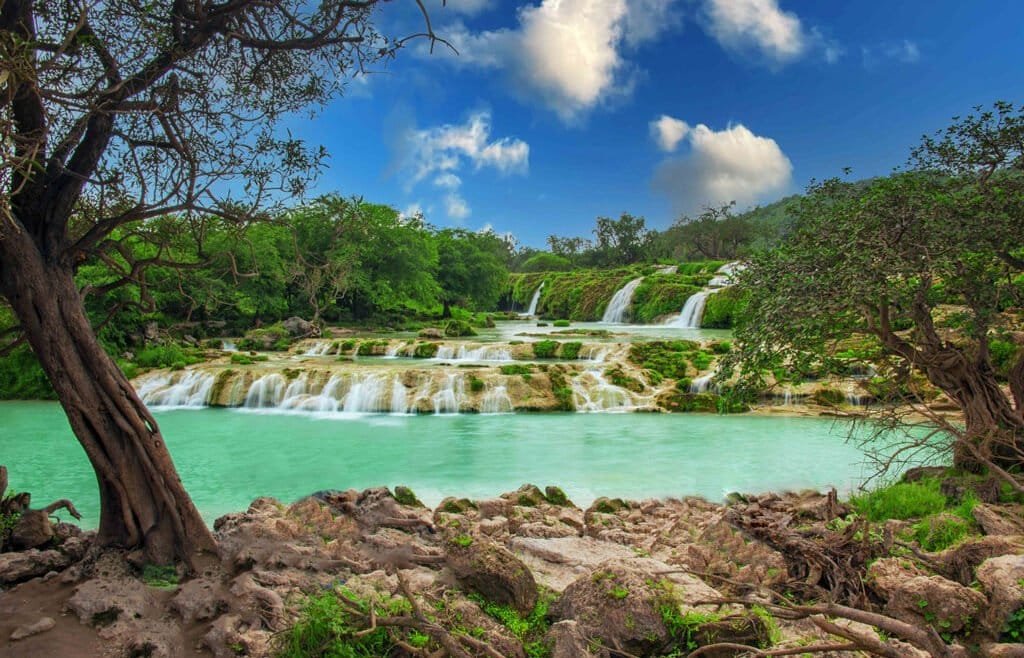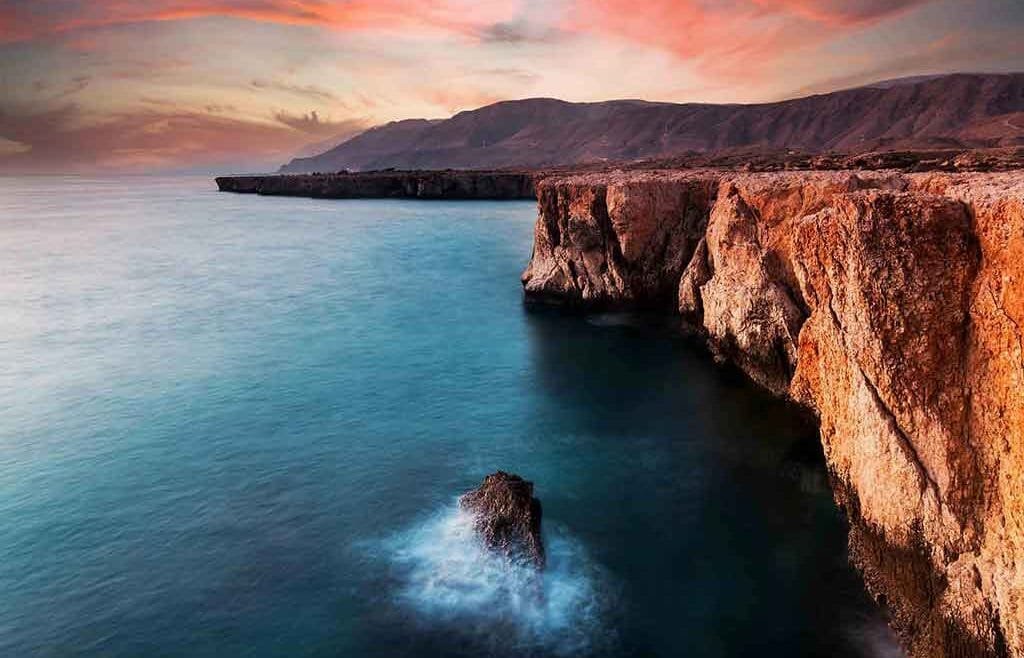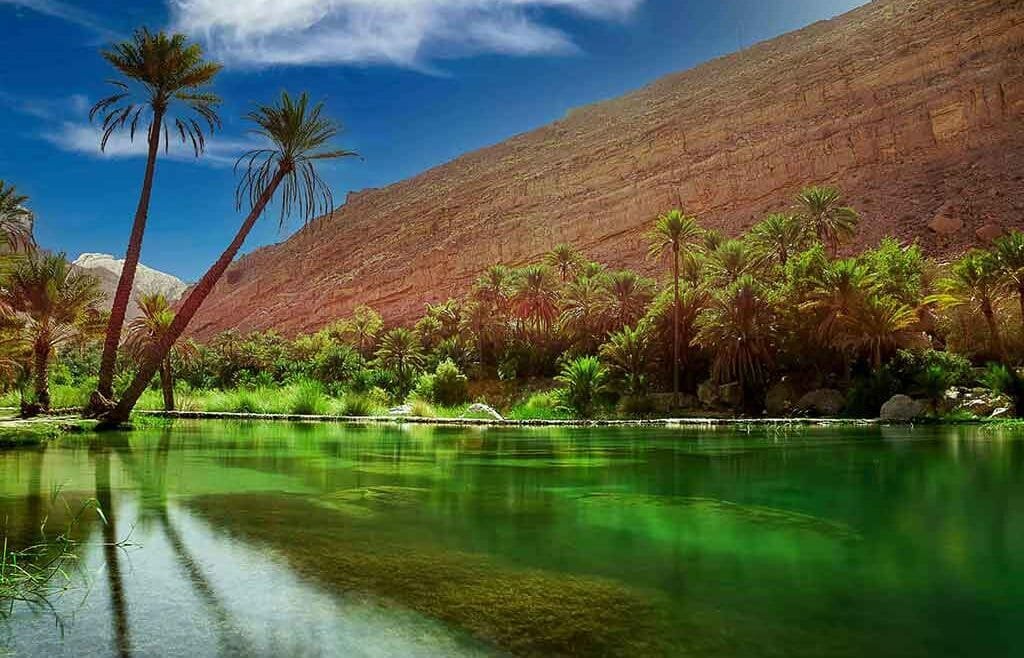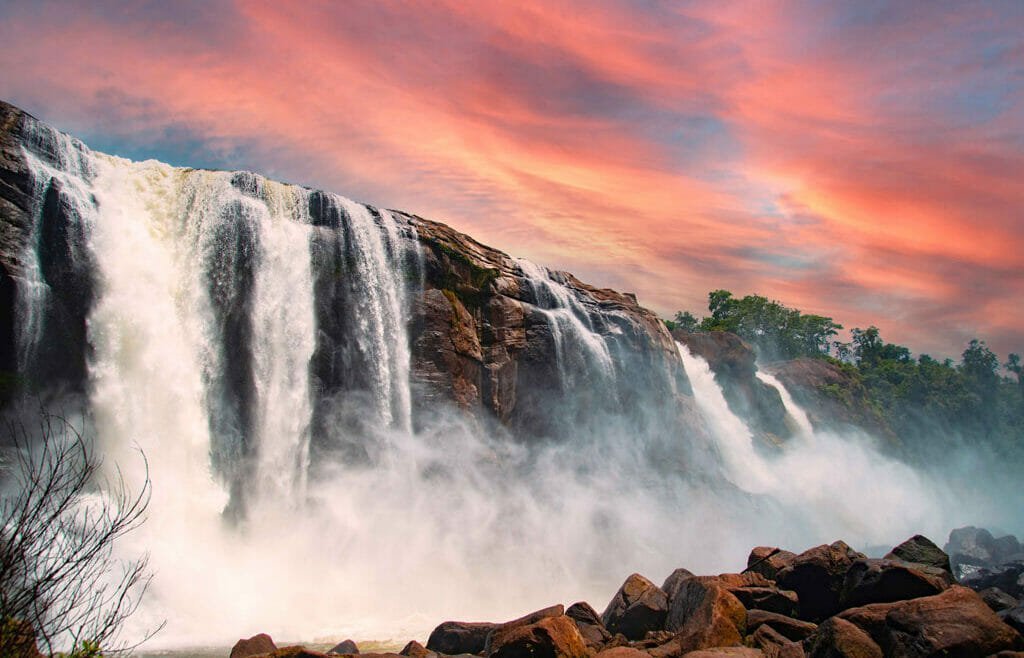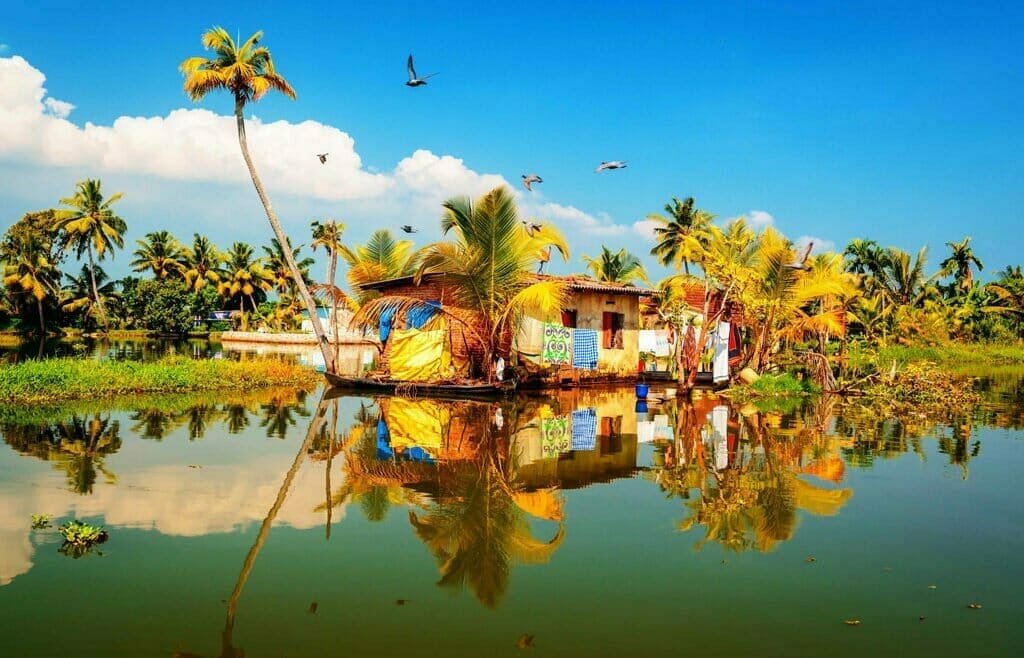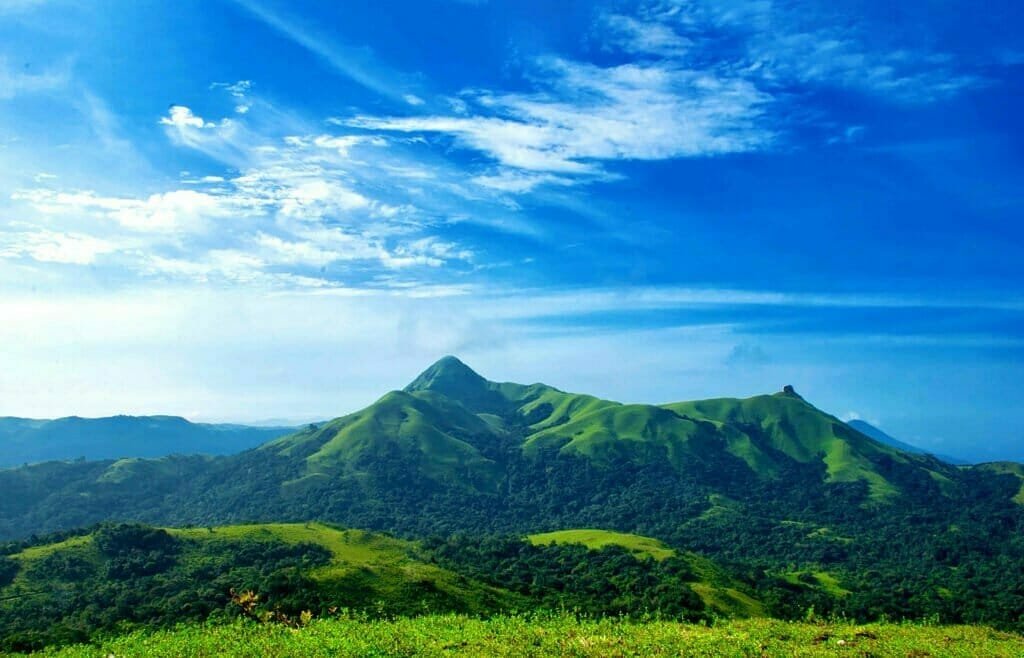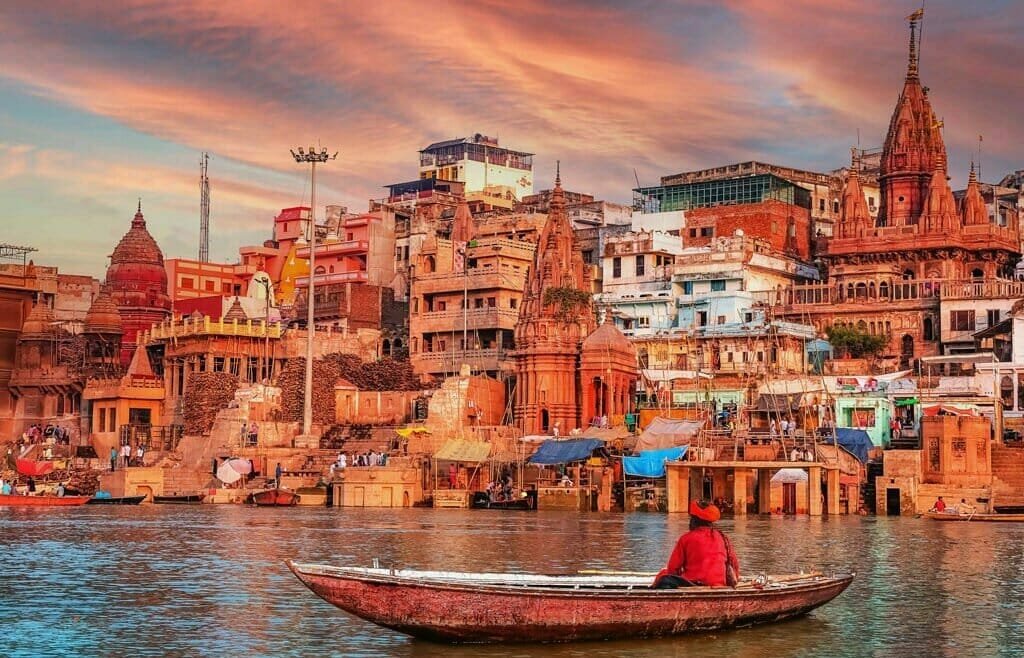Salalah
Salalah
Oman’s Monsoon Paradise
Introduction to Salalah
Salalah, located in the southern part of Oman, is a hidden gem renowned as the monsoon paradise of the country. While Oman is known for its arid desert landscapes, Salalah stands apart with its unique weather phenomenon known as the Khareef season. This enchanting season transforms the region into a lush green oasis, offering a stark contrast to the surrounding desert. In this article, we will delve into the captivating beauty of Salalah, explore its natural wonders, uncover its rich cultural heritage, savor its delectable cuisine, and discover the abundant outdoor activities it offers. Whether you are seeking a tranquil getaway or an adventurous escapade, Salalah has it all, making it an ideal destination for nature enthusiasts, history buffs, and those looking for a distinct travel experience in Oman.
Oman’s Monsoon Paradise
Salalah, nestled in the southern region of Oman, is a hidden gem that offers a unique twist on the typical desert landscape of the Arabian Peninsula. What sets Salalah apart is its monsoon season, known as the Khareef, which transforms this arid region into a lush green paradise. Exploring Salalah during the monsoon season is like stumbling upon a secret garden hidden in the midst of the desert.
The Location and Climate of Salalah
Located on the Arabian Sea, Salalah enjoys a moderate tropical climate, with temperatures rarely exceeding 30 degrees Celsius (86 degrees Fahrenheit) even in the peak of summer. This makes it an ideal coastal destination all year round. The city is surrounded by the towering Al Qara Mountains to the north and the Dhofar plains to the south, offering a diverse and captivating landscape.
The Significance of Monsoon in Salalah
Unlike most of the Arabian Peninsula, Salalah experiences a unique weather phenomenon called the Khareef season. During the Khareef, monsoonal winds blow moisture-laden clouds from the Indian Ocean, bringing a refreshing change to the region. This natural spectacle has turned Salalah into a haven for nature enthusiasts, as it provides a stark contrast to the typically arid and barren environment of the area.
The Unique Weather Phenomenon: The Khareef Season
The Khareef season in Salalah is characterized by cool temperatures, drizzles, and misty mornings. The arrival of the monsoonal winds creates a captivating ambiance, rejuvenating the entire region with an ethereal charm. The city is transformed into a green paradise as the landscape flourishes with vibrant vegetation, making it a perfect escape from the scorching heat of the Omani summer.
Duration and Timing of the Khareef Season
The Khareef season typically occurs from June to September, with its peak in July and August. This is the time when Salalah experiences the highest rainfall and is at its most lush and verdant state. It’s important to plan your visit during this period to witness the true magic of the Khareef and indulge in the natural beauty that unfolds during this time.
Impact of Khareef Season on Salalah’s Environment
The Khareef season not only transforms the landscape but also has a positive impact on the local ecosystem. The rainfall replenishes the underground water sources, allowing the flora and fauna to thrive. The mountains and wadis become adorned with cascading waterfalls, creating a picturesque backdrop for nature enthusiasts and photographers to capture the beauty of this unique season.
The Majestic Mountains of Salalah
Salalah is blessed with the Al Qara Mountains, which provide scenic hiking trails and breathtaking views. These majestic peaks offer a refreshing escape from the city, rewarding explorers with panoramic vistas of the surrounding lush valleys and the Arabian Sea stretching into the horizon.
Pristine Beaches and Coastal Attractions
The pristine beaches of Salalah are a must-visit for sun-seekers and water enthusiasts. The turquoise waters and soft white sands create a paradise-like setting. Whether you want to relax under the shade of a coconut tree or dive into crystal-clear waters, Salalah’s beaches offer a serene and peaceful coastal escape.
Lush Greenery and Waterfalls
The Khareef season paints Salalah with vibrant hues of green, transforming the entire region into a lush oasis. Wadis and valleys come alive with blooming flowers and dense foliage, creating a captivating sight. Picturesque waterfalls, such as Ayn Razat and Ayn Sahalnoot, cascade down the mountains, providing a refreshing respite and an enchanting backdrop for nature lovers.
Discovering Salalah’s Rich History
Salalah is not just about natural beauty; it also boasts a rich historical heritage. The city was an important hub for the ancient frankincense trade and was known as the “Perfume Capital of the World.” Exploring the history and significance of frankincense in Salalah offers a fascinating glimpse into the region’s past and its influence on global trade routes.
Visiting Historical Landmarks and Archaeological Sites
Salalah is home to a myriad of historical landmarks and archaeological sites that showcase its ancient roots. From the ruins of ancient cities like Al-Baleed Archaeological Park to the impressive Sultan Qaboos Mosque, there are plenty of opportunities to immerse yourself in the history and architecture of the region.
Immersing in Omani Culture and Traditions
Salalah allows visitors to experience the rich culture and traditions of Oman. The vibrant souks in the city center offer a glimpse into Omani craftsmanship, where you can find traditional fabrics, handicrafts, and locally produced frankincense. Additionally, attending cultural festivals like the Salalah Tourism Festival provides a chance to witness traditional music, dance, and folklore, further enriching your understanding of Omani culture. Indulging in Salalah’s Flavors and Cuisine
Exploring Local Cuisine and Food Markets
When in Salalah, you can’t miss the opportunity to immerse yourself in the local cuisine. Take a stroll through the vibrant food markets, where the aromas of freshly ground spices and exotic fruits will awaken your taste buds. Sample local delicacies such as shuwa, a slow-cooked lamb marinated in a variety of aromatic spices, or try maqbous, a flavorful rice dish with tender meat and fragrant saffron.
Traditional Omani Dishes and Delicacies
Salalah offers a multitude of traditional Omani dishes that are sure to satisfy your cravings. Experience the rich flavors of saloona, a hearty stew made with lamb or chicken and an assortment of vegetables, or indulge in harees, a creamy and comforting porridge-like dish made from wheat and meat. Don’t forget to try the famous Omani halwa, a sweet treat made with rosewater, saffron, and a variety of nuts.
Recommended Restaurants and Dining Experiences
When it comes to dining in Salalah, you’re spoiled for choice. Treat yourself to a luxurious dining experience at one of the city’s finest resorts, where you can savor exquisite international cuisine while enjoying breathtaking views of the coastline. For a more casual vibe, head to the local souks and street food stalls, where you can feast on mouthwatering shawarma or indulge in freshly grilled seafood. No matter your preference, Salalah has something to satisfy every palate.
Trekking and Hiking Opportunities
Salalah’s diverse landscape offers fantastic opportunities for trekking and hiking enthusiasts. Lace-up your boots and explore the rugged beauty of the Jebel Samhan mountain range, where you can conquer challenging trails and enjoy breathtaking panoramic views. For a more relaxed hike, head to the stunning Wadi Darbat, where lush greenery and cascading waterfalls create an oasis-like setting.
Wildlife and Bird Watching
Nature lovers will be delighted by Salalah’s abundant wildlife and bird-watching opportunities. Embark on a safari tour and spot Arabian oryx, gazelles, and camels roaming freely in the verdant hills. Bird enthusiasts can keep their eyes peeled for an array of colorful feathered friends, including flamingos, hoopoes, and sunbirds, in the region’s vast nature reserves.
Water Sports and Diving Adventures
With its pristine beaches and crystal-clear waters, Salalah is an ideal destination for water sports enthusiasts. Dive beneath the surface and discover a mesmerizing underwater world filled with vibrant coral reefs and an abundance of marine life. Whether you’re a beginner or a seasoned diver, Salalah’s dive centers offer courses and guided tours to suit all levels of experience. If you prefer to stay above water, take advantage of the coastal winds and try your hand at windsurfing or kitesurfing for an adrenaline-filled adventure.
Luxurious Resorts and Hotels
Salalah boasts a range of luxurious resorts and hotels that offer unparalleled comfort and world-class amenities. Pamper yourself with a stay in a beachfront resort, where you can unwind in lavish accommodations and indulge in rejuvenating spa treatments. Enjoy fine dining experiences, private pools, and panoramic views of the Arabian Sea, ensuring a truly memorable stay.
Cozy Guesthouses and Boutique Accommodations
For those seeking a more intimate and authentic experience, Salalah’s cozy guesthouses and boutique accommodations are the perfect choice. Immerse yourself in the local culture and hospitality as you stay in charming traditional houses adorned with Omani decor. These accommodations provide a unique opportunity to connect with the community and experience the warmth and friendliness of the locals.
Camping and Glamping Options
For adventurous souls who want to immerse themselves in nature, Salalah offers camping and glamping options that allow you to sleep under the starry desert sky. Set up camp in the scenic wilderness and wake up to breathtaking sunrise views. With the sound of the waves crashing nearby and the fresh scent of the sea, camping in Salalah offers a truly unforgettable experience.
Best Time to Visit Salalah
Salalah’s monsoon season, locally known as Khareef, is the prime time to visit. From June to September, the city transforms into a lush green paradise, with drizzling rain and cooler temperatures providing relief from the scorching desert heat. This is when Salalah’s waterfalls come to life, and the landscape is adorned with vibrant flowers and cascading streams.
Packing Essentials
When packing for Salalah, be sure to include lightweight and breathable clothing suitable for warm weather. Don’t forget to bring a rain jacket or umbrella, as showers are common during the monsoon season. Sunscreen, a hat, and sunglasses are essential to protect yourself from the strong UV rays. Lastly, pack comfortable footwear for exploring the city’s diverse terrain.
Respect for Local Customs and Traditions
As a visitor in Salalah, it’s important to respect the local customs and traditions. Dress modestly, particularly when visiting religious sites, and be mindful of local cultural practices. It’s also customary to remove your shoes when entering homes or places of worship, so pack a pair of socks that are easy to slip on and off.
Whether you’re a food lover, adventure seeker, or simply looking for a relaxing getaway, Salalah has it all. From indulging in the local flavors and cuisine to embarking on thrilling outdoor activities, this enchanting city in Oman offers a unique and unforgettable experience. So pack your bags, embrace the monsoon season, and get ready to explore the best that Salalah has to offer. In conclusion, Salalah truly stands out as a remarkable destination in Oman. With its unique monsoon season, breathtaking landscapes, rich cultural heritage, and a myriad of outdoor activities, Salalah offers a truly unforgettable experience. Whether you’re exploring the misty mountains, relaxing on pristine beaches, immersing yourself in the local culture, or indulging in delicious cuisine, Salalah has something for everyone. So, plan your visit to this monsoon paradise and immerse yourself in the natural beauty and charm of Salalah, a true gem in the heart of Oman.
When is the best time to visit Salalah?
Salalah’s prime attraction, the Khareef season, typically occurs from June to September. This is the best time to witness the lush green landscapes and enjoy the pleasant weather. However, Salalah can be visited throughout the year, as it offers a unique charm even outside the monsoon season.
Are there any precautions to take during the Khareef season?
While the Khareef season brings refreshing rain and cooler temperatures, it is advisable to be prepared for occasional heavy rainfall. It is recommended to pack waterproof clothing, and sturdy shoes for trekking, and carry necessary precautions against mosquitoes and other insects.
What are some must-visit attractions in Salalah?
Salalah offers a plethora of attractions to explore. Some must-visit places include the stunning Wadi Darbat, the historical ruins of Al Baleed Archaeological Park, the vibrant Haffa Souq, and the serene Mughsail Beach. Don’t miss out on visiting the famous Sultan Qaboos Mosque and the Frankincense Land Museum to delve into the region’s rich cultural heritage.
Are there any adventure activities available in Salalah?
Absolutely! Salalah is a playground for adventure enthusiasts. You can embark on thrilling trekking expeditions in the surrounding mountains, go dolphin and whale-watching in the Arabian Sea, or indulge in water sports like snorkeling and diving. Additionally, you can explore the mesmerizing Tawi Atair sinkhole or engage in bird watching in the Khawr Rawri nature reserve.


